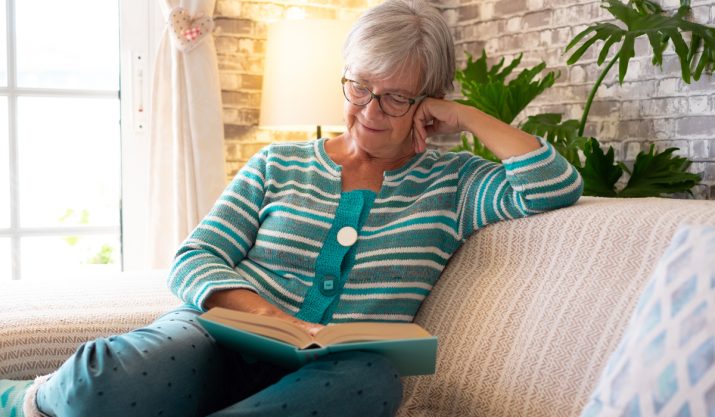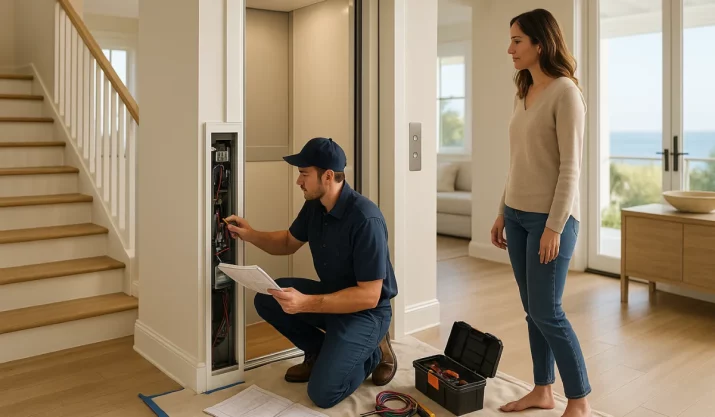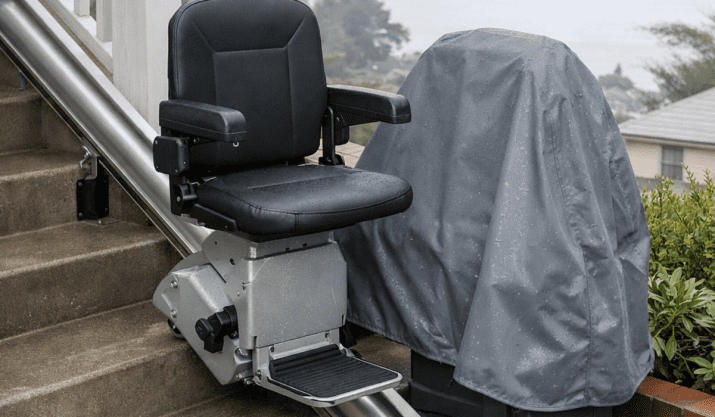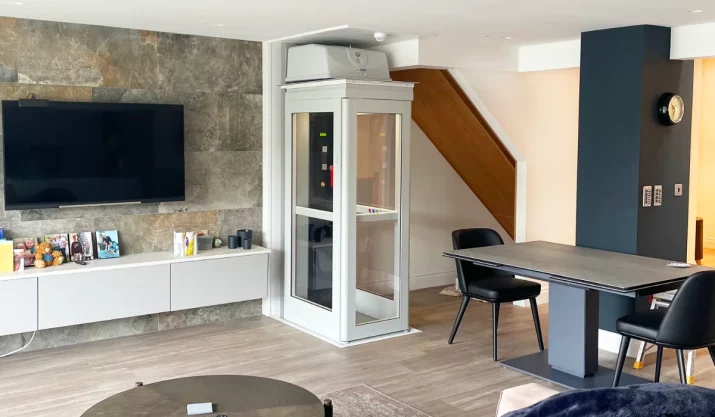Tips for Ensuring Safety at Home for Seniors

Table of Contents
Creating a safe and comfortable living environment becomes increasingly important as we age. This article offers practical home safety tips to ensure a secure and accessible living space tailored to the unique challenges posed by aging in place.
Learn how simple adjustments promote independence and peace of mind, empowering you to age safely and confidently at home.
Key Takeaways
- Prioritize fall prevention by decluttering, enhancing bathroom safety, and improving home lighting.
- Make necessary home modifications for accessibility, such as installing stairlifts and ramps for wheelchair access.
- Implement poison control and fire safety measures, including regular detector checks, proper medication management, and safe handling of cleaning chemicals.
- Improve home security with security systems, motion-detecting lights, and peepholes.
- Maintain social support by staying connected with loved ones, keeping emergency numbers accessible, and considering in-home care or support groups.
Fall Prevention
Fall prevention is crucial for maintaining independence and safety in your home. Here are some practical steps to minimize the risk of falls:
Clear Obstacles and Clutter
Remove clutter and obstacles from high-traffic areas, making it easier to navigate your home. Replace throw rugs with non-slip alternatives or remove them to prevent tripping hazards. Ensure electrical cords are tucked away and secured to avoid potential tripping hazards.
Improve Home Lighting
Ensure adequate lighting in all areas of your home, including entryways, hallways, and stairways. Install motion-detecting lights to illuminate spaces automatically when needed. Replace insufficient light fixtures and change bulbs to maintain bright and even lighting. Install night lights in hallways, bedrooms, and bathrooms to guide you during the night.
Enhance Bathroom Safety
Install grab bars, non-slip mats, and handrails in your bathroom to assist with balance and mobility, and make sure that any thresholds have treads for better traction. Consider adding a shower chair or bench, a raised toilet seat, and a step stool for easier access to higher shelves or cabinets.
Wear Non-Slip Footwear
Opt for non-slip footwear, such as shoes or slippers with rubber soles, to reduce the risk of slipping on various surfaces.
Home Modifications for Accessibility
Adapting your home to accommodate mobility needs is essential to age in place safely and comfortably. Here are some critical areas to consider when making home modifications:
Assess Stair Accessibility
Evaluate the stairs in your home to determine if a stairlift or home elevator might be necessary to improve mobility and safety between floors. This is particularly important for older adults or individuals with mobility challenges, as navigating stairs can become increasingly difficult. Installing a stairlift or home elevator can help maintain independence while reducing the risk of falls.
Ensure Wheelchair Accessibility
Inspect your home for wheelchair accessibility, noting potential obstacles and narrow spaces. Doorways, hallways, and other passages should be wide enough to accommodate a wheelchair or walker. Install ramps at entryways and other areas with elevation changes to facilitate smooth and safe transitions for wheelchairs or walkers.
You may also want to consider lowering countertops and adjusting the height of light switches and outlets. This will make them more accessible to you or other individuals using wheelchairs.
Poison Control
Taking appropriate measures to prevent accidental poisoning in your home is crucial for maintaining a safe living environment. Here are some critical steps to ensure safety:
Carbon Monoxide Safety
Protect yourself and your family members from the dangers of carbon monoxide by installing a functional detector in your home. This toxic gas is colorless and odorless, making it impossible to detect without proper equipment.
Check your carbon monoxide detector’s batteries regularly to ensure they work correctly. Installing detectors on every level of your home and near sleeping areas is also a good practice to maximize protection against potential poisoning.
Medication Management
Proper medication management is crucial to maintain your health and safety. Keep track of your medications by storing them in their original containers with clear labels to help you avoid mix-ups and ensure you take the correct dosage.
Remember to dispose of expired or unused medications safely by consulting your pharmacist or local disposal guidelines for appropriate methods.
Cleaning Chemical Precautions
Cleaning chemicals can pose significant hazards if not handled properly. For example, mixing bleach and ammonia can create a toxic gas that can cause respiratory problems or even death.
Always read labels carefully and avoid using different chemicals together unless the label specifically allows it. It’s also essential to wear protective gloves and clothing to prevent skin irritation or chemical burns.
Fire Safety
Protecting your home from potential fires is critical for your safety and well-being. Follow these comprehensive fire safety tips to reduce the risk of fires in your home:
- Smoke Detectors: Regularly check your smoke detectors and replace the batteries. Testing them monthly and replacing the entire unit every ten years is a good practice.
- Fire Extinguishers: Inspect your fire extinguishers to ensure they are in working condition and easily accessible in an emergency. Familiarize yourself with their operation and be prepared to use them if needed.
- Space Heater Safety and Candle Alternatives: Avoid using space heaters if possible. If you need to use one, ensure it is clear of flammable objects, and always turn it off before going to bed or leaving the room. Additionally, refrain from using candles in your home. Opt for safer alternatives like battery-operated flameless candles to reduce fire risk.
- Electrical Cord Maintenance: Regularly check electrical cords for signs of wear, fraying, or damage. Always replace damaged cords promptly and avoid overloading outlets or extension cords for long-term use.
Improve Home Security
Enhancing your home security can provide peace of mind and protect you from threats. Consider these ideas to improve the safety of your living space:
Security Measures and Lighting
Invest in a comprehensive security system, including cameras, alarms, and monitoring services, to deter potential intruders and alert you to any issues. Additionally, install motion-detecting light bulbs outside your home, which can serve as a deterrent and illuminate walkways and entry points for added safety.
Door and Mail Security
Add a peephole to your front door, allowing you to see who is outside before opening it. It would be best to consider reinforcing door locks and securing sliding doors with additional locking mechanisms.
Finally, ensure your mail is secure by locking your mailbox or signing up for a mail monitoring service to prevent identity theft and keep sensitive information safe.
Social Support
Maintaining a robust social support network is essential for overall well-being. It can also contribute to your safety at home. Here are some ways to stay connected and build a supportive environment:
Stay Connected and Accessible
Keep in touch with friends and family; they can provide emotional support and practical assistance when needed. Also, store emergency phone numbers in an easily accessible place, such as near your landline or saved on your cell phone, so you can reach out for help quickly in an emergency.
Professional Help and Support Groups
Consider hiring a caregiver or housekeeper to assist with daily tasks and ensure your home remains safe and well-maintained. Joining a support group can also provide valuable connections with others who share similar experiences and concerns, offering a space to share advice, resources, and encouragement.






